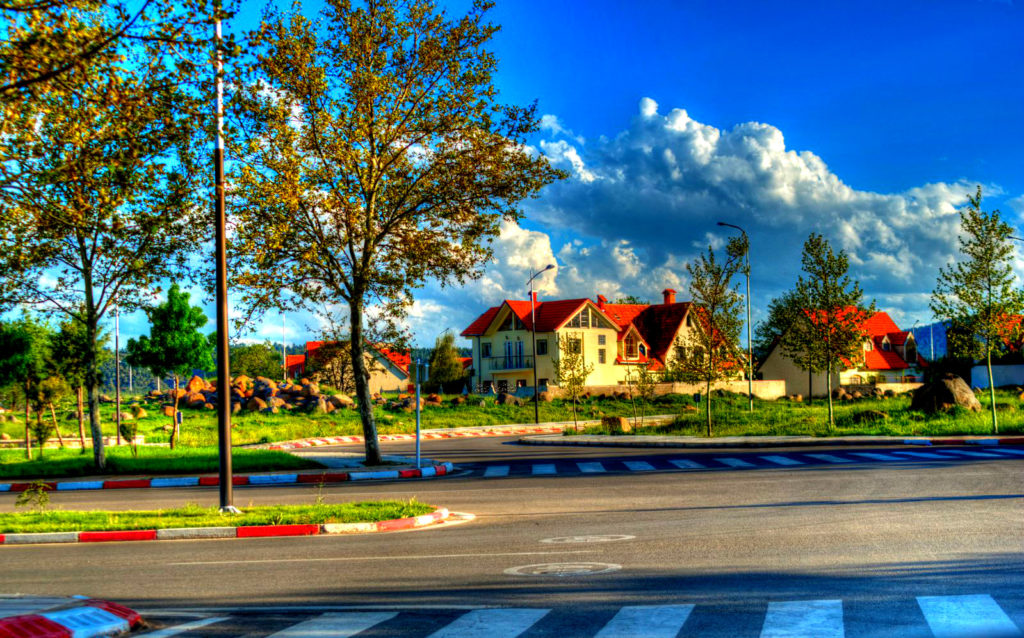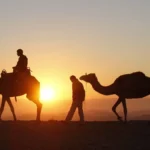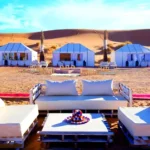Want to discover Ifrane? There are countless different ways to encounter it. The province of Ifrane, nicknamed “Little Switzerland”, has a huge tourist potential: variety and diversity of landscapes, lakes, and waterways, as well as a mild climate. Its natural wealth makes it a favorite tourist center for hiking, and wild boar hunting and its lakes are a must for fishing.
The largest cedar forest in the world can be found in Ifrane National Park. Ifrane the Moroccan Switzerland is a Moroccan city of 155,000 inhabitants, located in the Middle Atlas Mountains at an altitude of 1,713 meters.
Ifrane the Moroccan Switzerland, the city in the Moroccan Middle Atlas, is characterized by its European urbanism. Located in the Middle Atlas, it is an oasis of freshness and superb greenery: lakes, and fountains, and the change of scenery is total, surprising, and regenerating for lovers of the landscape.
The freshness is felt as soon as you arrive in Ifrane. In this area in the middle of a cedar forest, there are numerous springs and lakes. The chalets with sloping roofs are surprisingly reminiscent of Switzerland.
The Vittel spring and its waterfalls are an ideal destination for a walk. Walk along the river for a few hundred meters and discover the forest of maples and poplars through which the spring water flows.
The waterfalls can be reached via brief horseback excursions during the summer.
The natural wealth of the area has led to the creation of a national park of 53,000 hectares. This region is home to the largest cedar forest in the country.

History of France
After the French penetration, the sultan was forced to accept a protectorate treaty signed on March 30, 1912.
In 1928, the authorities of the French protectorate decided to create a summer resort called Ifrane (caves in Tamazight/Bereber). Two projects for the creation of a summer resort were proposed to Eirik Labonne, Secretary General of the Protectorate.
The geographical situation of Ifrane, the topography, and its privileged climate, determined the choice of the Moroccan Government to build a summer resort in a space free of any construction. Part of the workforce was made up of prisoners. On July 9, 1929, the first truckload of materials arrived. On August 15, 1929, the hotels, the casino, the chalets, the summer camp, and the lions’ square were inaugurated.
Thus, Ifrane is transformed into a tourist center with a Swiss look that no one would find strolling in this region of the Middle Atlas.
Its villas have red-tiled roofs whose slopes vary from obtuse to acute to angular, thus recalling the different slopes relative to the architecture of buildings in France from South to North, i.e. from the Côte d’Azur to the English Channel. The visitor can even observe the existence of typical Norman or Breton or even German shepherd facades.
All the French wanted to transpose the way of life of their country of origin out of a feeling of nostalgia, and at the same time to remember their passage. A Frenchman who lived in Ifrane from 1936 to 1992 told us about the evolution of the urban fabric of this city, that in fact, those in charge at the time wanted to make it a city where the French did not feel out of place at any time. Check out our Morocco tours.
Ifrane is classified as a natural site by the Vizier’s Decree of September 6, 1947.
The lion of Ifrane
A must-see monument sculpted by an unknown artist!
The encounter is surprising. Isolated on an island of vegetation in this natural park, carved into the rock, a lion rests, meditative, seemingly immersed in deep introspection, and has intrigued visitors for many decades.
Inscribed in legend, the most diverse rumors have long circulated, according to which it is the work of a prisoner (a German surplus), of legionnaires, or individuals of various nationalities…
In reality, this emblematic lion was sculpted entirely in the rock by the hands of Henri Jean Moreau, a drawing teacher at the Lycée Gouraud (Lycée Hassan II of Rabat) and then regional inspector of historical monuments of Rabat, at the end of spring 1930.
The sculptor and his work remained unknown to the inhabitants of Libourne and the Moroccans.
Throughout the day, many people pass in front of the statue of Ifrane, without knowing the name of the artist.
Ironically, for more than seventy years, under the beautiful Moroccan sun and in the greatest anonymity, the notoriety of Ifrane’s sculpture continues to take the lion’s share.







